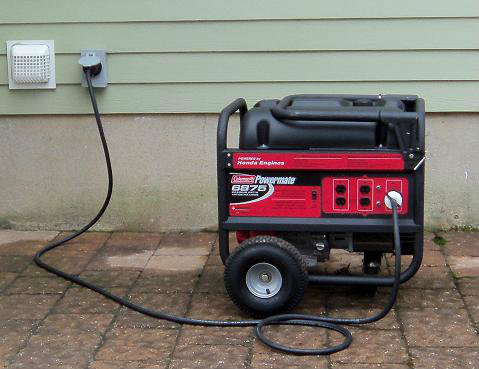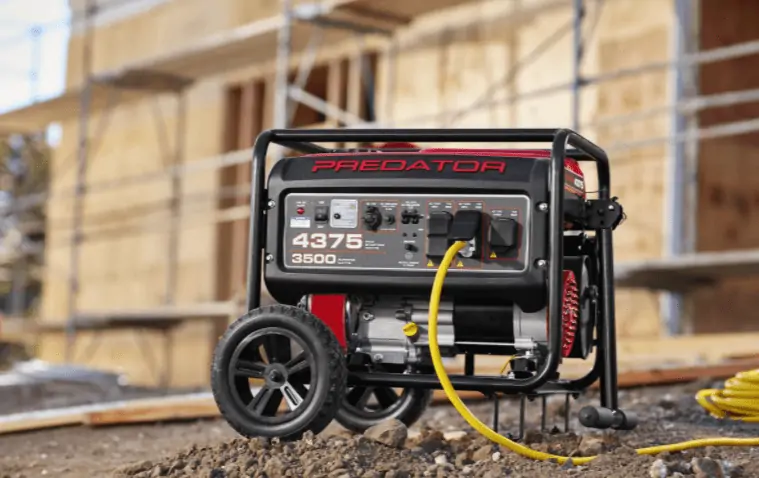When choosing the size of the wire that connects a generator to a home. You must take into account variables such as the voltage, current, circuit breaker, and wire length of the generator. The wire must be rated for the system voltage and capable of carrying the current load.
Moreover, it should also match or exceed the rating of the circuit breaker at the generator. Additionally, the wire length should not cause a voltage drop of more than 3 percent. For most home installations, wire sizes between 14 AWG and 6 AWG are commonly used.
Remember that these sizes are general guidelines. Hence, it’s important to consult with a qualified electrician. Try to follow local codes and regulations for a safe and compliant installation.
Factors to Consider for Generator Wiring

When determining the appropriate wire size for a generator-to-house installation. several key factors must be considered:
Generator Specifications
Understanding the output voltage and current rating of the generator is crucial. This will dictate the electrical requirements for the wire size. Generators Come In Various Sizes And Capacities.
So it’s Important To Match The Electrical Characteristics Of The Generator To The Wiring.
House Wiring Specifications
The existing electrical system in the house must be considered. This includes the voltage requirements and the current carrying capacity of the wires already in place.
Also, think about the different kinds of loads that the generator will power; certain loads can call for different cable diameters.
Distance Between Generator and House
The distance between the generator and the house can affect the voltage drop in the wiring. Longer distances generally require larger wire sizes to minimize voltage drop.
Safety and Code Compliance
Compliance with the National Electrical Code (NEC) and local regulations is essential for a safe and legal installation. These codes often dictate minimum wire sizes for specific applications.
Load Calculation
It is essential to know how much electricity the generator will provide at peak and overall loads. It facilitates accurate wire sizing. Calculating loads can be aided by a qualified electrician.
Voltage Drop Consideration
Voltage drop is the decrease in voltage along the length of the wire. It’s important to calculate and minimize voltage drops to ensure that the connected loads receive sufficient voltage.
The NEC generally allows for a maximum voltage drop of 3% for branch circuits and 5% for feeders.
Wire Material and Type
The wire material (copper or aluminum) and type (solid or stranded conductors) must be chosen based on the specific application. This includes the load, environmental factors, and installation requirements.
Installation Considerations
This includes considerations such as conduit requirements, grounding requirements, and protection and safety measures.
Hiring a qualified electrician and obtaining necessary permits are also important for a safe and compliant installation.
How to Calculate Wire Size For Generator?

Wire sizing calculation involves several steps, including calculating the load, determining voltage drop, and selecting an appropriate wire size based on the NEC or local codes. Here’s a breakdown of the process:
Determine Load Size
First, you need to know the size of the load you want to power with the generator. This includes all the appliances, lights, and other electrical devices you want to be able to use during a power outage. This information is crucial because it helps you determine the total load the generator will be expected to handle.
Determine Voltage and Current Requirements
You’ll need to know both the voltage of the electrical system and the current rating of the generator. Most residential electrical systems in the United States operate at 120/240V. The current rating of the generator can be found in the generator’s specifications or on the nameplate.
Calculate Total Load
If you have multiple appliances and devices, you’ll need to add up their wattages to get the total load.
For example, if you want to power a 1000W refrigerator, a 2000W air conditioner, and a 500W set of lights, your total load would be 1000W + 2000W + 500W = 3500W.
Calculate Full Load Current
Use the formula P/V = I, where P is the total load in watts, V is the voltage (typically 120/240V), and I is the full load current.
So, for example, if your total load is 3500W and the voltage is 120V, the full load current is 3500W/120V = 29.16A.
Selecting Wire Size
The next step is to select the appropriate wire size based on the calculated full load current. Different wire sizes have different ampacity ratings, which is the maximum current the wire can safely carry.
Further, the National Electric Code (NEC) has specific tables that guide wire size selection based on current ratings and the type of wire being used.
Consider Voltage Drop
Finally, it’s important to consider voltage drop when selecting wire size. Voltage drop occurs when the resistance of the wire causes a drop in voltage as current flows through it.
So, this can affect the performance of the generator and the devices being powered. The NEC recommends keeping voltage drop below 3% for most applications.
Consult an Electrician
It’s always a good idea to consult a licensed electrician when installing a standby generator or any electrical wiring.
They can help ensure that the wiring is done safely and in compliance with local building codes and regulations.
Key Points for Safe Generator Wiring Installation

Installation considerations for a generator to house wiring involve several important factors.
To ensure safety, compliance with codes, and optimal performance. Here’s an overview of key installation considerations:
Conduit Requirements
Conduit usage can be required. Depending on the installation style and location, to shield cables from harm and give wires a path. The size of the conduit should match the number and size of the conductors being installed.
For example, for two 10 AWG conductors, a 1/2-inch conduit would be appropriate. For four 10 AWG conductors, a 3/4-inch conduit would be suitable.
Grounding Requirements
Proper grounding is essential for electrical safety. Ensure that the generator and all equipment are properly grounded according to the NEC or local codes.
Location and installation type dictate conduit necessity, protecting wiring and offering a wire pathway to ensure safety and efficiency.
Protection and Safety Measures
Install appropriate overcurrent protection devices, such as circuit breakers or fuses.
To protect the wiring and equipment from overloads and short circuits. Surge protection devices should also be considered to protect against voltage spikes.
Professional Installation and Permits
Working with a qualified electrician is highly recommended for generator installations. They can ensure that the installation meets all safety and code requirements.
Additionally, they can obtain any necessary permits and address any specific local regulations or requirements.
Physical Installation
Properly secure and support the wiring, especially if it’s run overhead or underground.
Follow the manufacturer’s recommendations for installation and ensure that all connections are tight and properly insulated.
Interlock or Transfer Switch
When a generator is permanently connected to house wiring, an interlock or transfer switch is essential to prevent backfeeding the utility grid.
This switch ensures that the generator can only be connected to the house or the grid, but not both simultaneously.
Testing and Inspection
After installation, the system should be tested to ensure that it operates correctly and safely. To verify the installation, a certified electrician or the local code authority could be required to do an inspection.
Documentation
Keep detailed records of the installation, including wiring diagrams, equipment specifications, and any permits or inspections.
This documentation can be valuable for future maintenance and for proving compliance with codes and regulations.
FAQ’s
How do you size wire for a generator?
To size wire for a generator, multiply the amperage by 1.25 (following the 80% NEC rule) to calculate wire ampacity. Then consult with a wiring and cable expert to determine the appropriate size generator cable.
What size wire do I need for a 7500-watt generator?
For a 7500-watt generator, a 10 gauge wire is recommended, ensuring steady power transfer for various applications.
What size wire do I need for a 5000-watt generator?
For a 5000-watt generator, an 8-gauge wire is suitable for handling the output of around 42 amps at 120 volts.
How do you size a generator for a house?
Generator size depends on needs: 500-3,000W for small appliances, 3,100-6,000W for midsize, 6,100-10,000W for large, and 10,100W+ for whole-home.
Final Words
Selecting the right wire size for connecting a generator to a house is crucial for safety and efficiency. By considering factors like voltage, current, circuit breaker rating, and wire length. Then, you can ensure that the electrical system operates reliably and meets your needs.
While wire sizes between 14 AWG and 6 AWG are typical for most home installations.
So, it’s essential to consult with a professional electrician to ensure compliance with local regulations and codes. With the correct wire size and proper installation. You can enjoy the peace of mind that comes with a reliable backup power solution for your home.
